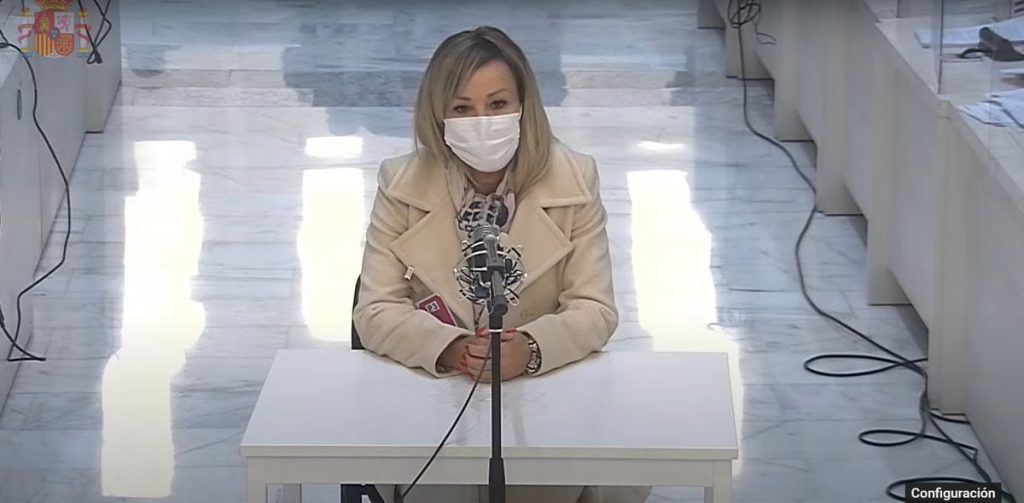The sentence that ultimately led Ana María Cameno, also known as the Queen of Cocaine, to prison is now final. The Supreme Court has confirmed the 16-year prison sentence imposed by the National Court in September 2022 on this woman from Burgos who led a distribution and sale network of cocaine that in 2014 carried out operations involving almost 100 kilos of this drug. The Supreme Court has rejected the appeals of Cameno and 11 other convicts, confirming sentences ranging from four to nine years in prison for drug trafficking and money laundering. Out of the 16 years in prison imposed on Cameno, 12 correspond to a crime against public health, and four to a money laundering offense. The Court also decreed a fine of 21.2 million euros (20 million for the first offense and 1.2 for the second), also confirmed by the high court, which rejects the defendants’ claim that there was not enough evidence against them to uphold the convictions.
The judges of the Supreme Court have deemed it proven that Cameno does not have any legal source of income, but possesses a significant amount of assets (either directly owned or through companies, or rented), from houses to vehicles, and handles “significant amounts of cash.” The Court also considers it beyond doubt that, with Cameno’s mediation, money laundering operations were carried out, and that there is no, as claimed by the convict, a sentence “based on conjectures.” The conviction is, according to the tribunal, “the confirmed reflection in the sentence of solid evidence of the convict’s involvement in drug trafficking, which is an unquestionable reality and constitutes the requirement of previous criminal activity and the use of those illicitly obtained funds to be laundered in economic transactions, using professionals and corporate structures to achieve the laundering of those illicitly obtained funds.”
The Supreme Court’s sentence cites excerpts from the National Court’s, detailing Cameno’s tactics to avoid detection: “She adopted extreme security measures, avoiding phone communications as much as possible, relying on third parties, and holding personal meetings inside the various vehicles she used and in other locations.” The judges also note that, for the transportation of cocaine, the convict used various vehicles, always under the names of third parties, which had been modified to hide the drug in a hidden compartment. These vehicles were driven by other members or collaborators of her criminal organization, to whom Cameno gave instructions to collect and deliver the drugs to buyers, according to the high court’s ruling.
The Queen of Cocaine was the “permanent” base of the criminal organization, which included other individuals. Some were part of the organization and participated in all operations, while others were only regular collaborators. Cameno managed the business from end to end, ensuring contact with suppliers, transporters of the substance, and handling payments for the sale of cocaine, among other duties. To integrate the illegally obtained money back into legal economy, Cameno contacted other individuals, who were also convicted of money laundering by the Supreme Court. After the conviction by the National Court, which Cameno fought against in the Supreme Court, she accepted a new sentence last summer for drug trafficking in the case of the Miamis, where she was judged along with four criminal groups that introduced large amounts of cocaine into Spain.
The sentencing in the Miami case was related to a large alliance of criminal groups that brought vast amount of cocaine into Spain in the early 2000s. The Prosecution considered Cameno to be the key communication and organizing element between the top leaders of the four main branches of the alliance. Initially facing a 39-year prison sentence, Cameno’s sentence was reduced to only five years due to mitigating factors such as undue delay and confession. Despite the legal battles and convictions, the Queen of Cocaine exemplifies the significant impact of drug trafficking and money laundering on individuals and society, as well as the continued efforts by law enforcement to combat these criminal activities.















